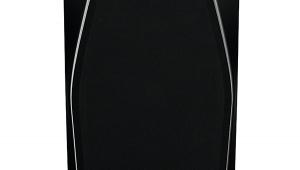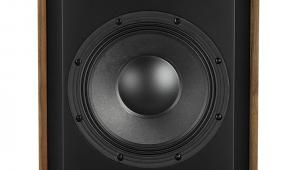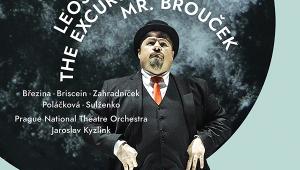Jbl Project K2 S9900 (£28,000)
When informed I had a pair of horn-loaded JBL floorstanders coming my way for auditioning I confess I wasn’t particularly enthralled. And I was quietly cursing as several of us groaned under the 73kg weight of each enclosure, man-handling them down the stairs into my basement listening den. Then I heard them. It was mid-afternoon when they were first fired up, powered by my resident Mark Levinson No.383 amplifier. Before I knew where I was it was well after midnight… and by the time I powered down and reluctantly went to bed I suspected I was falling in love with a very special transducer indeed. OK, I’d an inkling that JBL’s Project K2s should be pretty tasty inasmuch as I know a couple of people in the UK who heard the previous K2 S9800s (nearly a decade ago) and said they were tremendous. Given the K2’s astronomical price I should hope so too. But they never said they were utterly fabulous. From a casual glance this fresh-up design dubbed K2 S9900 is similar in appearance and specification to the out-going K2 although there are numerous detail changes. It was launched in the US and Japan last year, but only now is it available in the UK. HFN managed to purloin the first pair to land in the country.
Why so expensive? JBL’s ‘Project’ speakers, as with Levinson high-end electronics, come from parent company Harman International’s high-performance AV (HPAV) division that showcases cutting-edge technology in specialised products [see boxout]. So while a mass-market JBL speaker might be manufactured in quantities of tens of thousands for worldwide distribution, a JBL Project speaker is carefully hand-assembled more likely in batches of tens.
And if the cosmetic design of this latest K2 doesn’t exactly scream ‘modern hi-tech’, close inspection reveals a complex cabinet structure with meticulous attention to detail and immaculate finish.
MAGNETS AND MDF
The enclosure’s 25mm-thick curved panels are formed using two decoupled layers of MDF, grooved to allow flexure and then locked into the desired radius with a backing material, the voids between the grooves filled with a foam and glue.
The curved baffle provides the sidewalls for the main horn, with top and bottom horn ‘lips’ formed of moulded Sonoglas. The cabinet’s bracing is a shaped form over which the curved panels are applied, while the interlocking woofer baffle module is a separate shell. This has additional bracing and an extra layer of MDF to make it 45mm thick.
Omnipresent is the company’s 1500AL-1 woofer featuring an Alnico magnet and 380mm (15in) layered paper pulp matrix cone with Aquaplas damping and foamed rubber surround. Similar to the 1500AL driver used in the ’S9800, its voice coil length has been increased to 25.4mm (from 20.3mm) while improvements to the design provide greater cooling and a 25% increase in power handling. The motor structure alone weighs 16kg, and is supported on a cast aluminium frame.
Meanwhile the speaker’s ‘476Mg’ 100mm (4in) diameter high-frequency compression driver is a third larger than the beryllium unit that is used in the ’S9800, employing a newly designed magnesium alloy diaphragm with diecast zinc phase plug, edge-wound aluminium voice coil and neodymium magnet assembly.
The speaker’s primary crossover point is low at 900Hz (24dB/octave), the compression driver/horn working up to a claimed 22kHz. JBL calls the K2 an ‘augmented 2-way’ as an ultra high frequency compression driver is ‘turned on’ at 15kHz to cover a further two octaves. Mounted to a separate Sonoglas horn this ‘045Be-1’ unit uses a 25mm beryllium diaphragm just 0.04mm thick, its aluminum ribbon voice coil wound without a former and attached directly to the diaphragm.
The supertweeter’s tiny phasing plug assembly is made using stereo lithography techniques, while small changes to the surround shape and clamping have yielded a claimed 5dB of increased output above 30kHz compared with the ‘045Be’ driver used in the previous K2.
The K2’s enclosure has a 100mm diameter flared port with a tuning frequency of 34Hz that vents at the rear. While it’s an imposing speaker to be sure, its shallow (front-to-back) footprint coupled with the dispersion characteristics of the horn-loaded drivers makes it surprisingly living room friendly. The enclosure rests on four stainless steel foot/spike assemblies, with stainless steel coasters provided to protect wood and tile floors from damage from the spikes.
TOTALLY FRESH
My very first impressions, which were of tremendous detail resolution throughout the frequency range, were not misguided. Nor was my initial sensation of love-at-first-hearing. By the time I’d lived with them for a week I was besotted with these speakers.
What grabbed me from the minute they were first playing music in my room was their extraordinary transparency to source recordings. This is going to sound clichéd I know, but time after time I found myself observing hidden details that I simply never knew were there, despite my privileged position of having played host to countless high-end audio components over the years.
Familiar tracks such as Deep Purple’s ‘Highway Star’ from 1972’s classic Machine Head [Warner/Rhino R2 75622] that I’ve been listening to since barely out of short trousers – and have owned for a decade even in its short-lived hi-res DVD-A reissue – sounded totally fresh. What was usually a wall of dense sound was nothing of the sort, the separation between Blackmore’s rabid guitar chops and Jon Lord’s dirty, grunge-laden Hammond organ proving a revelation. Never before have I been able to hear so clearly exactly what the band members were playing and so precisely how they were playing it.
Likewise on Frank Zappa’s Joe’s Garage Act One [EMI CDS 7 90087 2], the first ‘Central Scrutinizer’ track that opens the piece with Zappa’s heavily treated vocals has always proved difficult to decipher with so many backing tracks muddying the mix. Not so with the ’S9900s; individual strands of the dense production were delightfully separated and the vocal lines clear as crystal glass. It was as if someone had allowed me to plug headphones straight into the studio’s mixing desk… but with a subwoofer strapped to my backside to give the listening experience some visceral ‘oomph’.
Then there was the title track from Steely Dan’s 1974 Pretzel Logic album [MCA MCD11917]. The thick-sounding bass and drums couldn’t disguise the recording’s vintage however the clarity of the boogie-woogie keyboards and layered harmony vocals was again a revelation, and the electric guitar leaped out of the mix with striking brilliance as if it had been recorded only last month.
PANEL BEATER
This has been happening time and time again during the weeks that the K2s have been in residence. Recordings I thought I knew intimately have been openly exposed, revealing previously unobserved details of production techniques applied to instruments. Indeed, these K2s provide a level of transparency through the midrange and treble one might normally associate with a sweet-sounding electrostatic panel. What they do is illuminate a recording’s individual constituents, exposing the subtlest of details such as reverberation tails disappearing all the way down to silence. Stereo imaging and the recreation of image depth is fantastic, doubtless due to the dispersion characteristics of the horns causing me to hear more direct sound from the transducers and less reflected sound from the side walls than I’m accustomed to in my listening room.
Meanwhile the brilliance of the K2’s high frequencies makes the sound of a wooden stick striking a cymbal or drum skin uncannily realistic. The sound is brightly lit, yet this K2 pulls off a neat trick of also being forgiving of harsh recordings and never ‘shouting’. I wouldn’t have thought it possible for a speaker to be so analytical while being so thoroughly musical and easy-on-the-ear in equal measure.
And while lovers of infrasonic bass such as me might hanker after deeper bass, there’s no denying that 15in woofer packs a might punch, with a dynamic realism that can make you wince.
VERDICT
While you won’t require an enormous listening room to enjoy them thanks to their shallow cabinets, you’ll certainly need deep pockets to afford them. The sound the K2 S9900s produce is quite remarkable, combining revelatory analytical detail with a surprisingly forgiving nature. So while brightly-lit they remain easy on the ear, producing mellifluous and addictive music making. To hear them is to want them.
Sound Quality: 89%























































